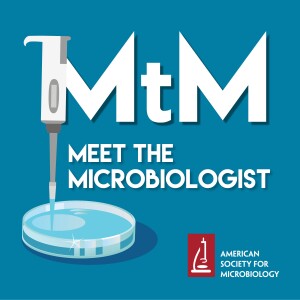
120: Antibiotic-Resistant Infections in Hospital Sinks with Amy Mathers
 2019-11-08
2019-11-08
Many hospital-acquired bacterial infections are also drug-resistant. Amy Mathers describes her work tracking these bacteria to their reservoir in hospital sinks, and what tools allowed her team to make these discoveries. Mathers also discusses her work on Klebsiella, a bacterial pathogen for the modern era.
Subscribe (free) on Apple Podcasts, Google Podcasts, Android, RSS, or by email.
Julie’s Biggest TakeawaysNosocomial infections are a type of opportunistic infection: one that wouldn’t normally cause disease in healthy individuals. Once the immune system is compromised due to other infection or treatment, the opportunist bacteria take advantage of the conditions to grow to higher numbers and cause disease.
How are different pathogens transmitted in the hospital? Previously, transmission was considered to occur from one patient to a second patient, perhaps via a healthcare worker. When patients from very different parts of the hospital began to come down with the same resistant strain of bacteria, without interacting through the same space or staff, researchers began to look at a different reservoir: the hospital wastewater.
How does the bacteria get from the sink to the patients? The bacteria, existing in a biofilm in the pipe right below the drain, can be transferred in droplets when the water is run. These droplets can fall as far as 36 inches from the drain plate and can contaminate the sink bowl or patient care items next to the sink.
Some of the solutions to decrease bacterial dispersion from hospital sinks are very simple: for example, offsetting the drain from the tap, which keeps the water from directly running onto the drain, helps decrease the force with which the water hits the drain and therefore decreases bacterial dispersion.
The Sink Lab at University of Virginia couldn’t replicate the bacterial growth patterns seen in the rest of the building; in particular, there were fewer protein nutrients that promoted bacterial growth. By setting up a camera observation of sink stations used in the hospital, the team realized that the waste thrown down the sink (extra soda, milk, soup, etc) was feeding the microbial biofilm. This helps the CRE in the biofilms in the sinks thrive.
Links for This Episode MTM Listener Survey, only takes 3 minutes. Thanks! Amy Mathers website at University of Virginia The Sink Lab at UVA Kotay SM et al. Droplet- Rather than Aerosol-Mediated Dispersion is the Primary Mechanism of Bacterial Transmission from Contaminated Hand-Washing Sink Traps. Applied and Environmental Microbiology. 2018. Mather AJ et al. Klebsiella quasipneumoniae Provides a Windo into Carbapenemase Gene Transfer, Plasmid Rearrangements, and Patient Interactions within the Hospital Environment. Antimicrobial Agents and Chemotherapy. 2018. Kotay S et al. Spread from the Sink to the Patient: in situ Study Using Green Fluorescent Protein (GFP)-Expressing Escherichia coli to Model Bacteral Dispersion from Hand-Washuing Sink-Trap Reservoirs. Applied and Environmental Microbiology. 2016.Let us know what you thought about this episode by tweeting at us @ASMicrobiology or leaving a comment on facebook.com/asmfan.
Send your stories about our guests and/or your comments to jwolf@asmusa.org.
More Episodes
 2017-10-25
2017-10-25
 1
1
 2017-09-24
2017-09-24
 1
1
 2010-12-29
2010-12-29
 1
1
 2010-11-23
2010-11-23
Create your
podcast in
minutes
- Full-featured podcast site
- Unlimited storage and bandwidth
- Comprehensive podcast stats
- Distribute to Apple Podcasts, Spotify, and more
- Make money with your podcast
It is Free
- Privacy Policy
- Cookie Policy
- Terms of Use
- Consent Preferences
- Copyright © 2015-2024 Podbean.com




